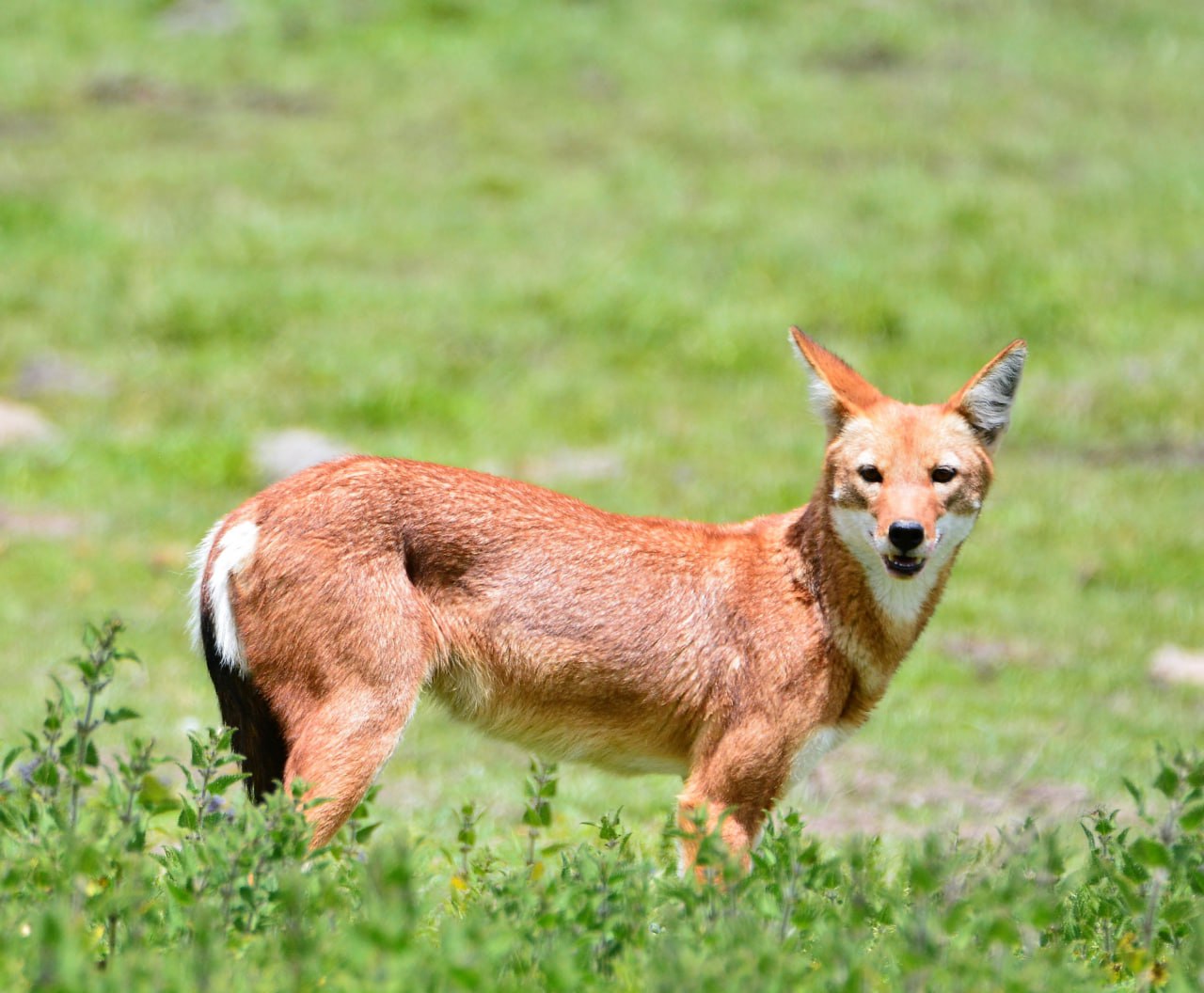
Bale Mountains National Park " One Park, Many Worlds"
The newest UNESCO World Heritage site in Ethiopia, the Bale Mountains National Park is located in the southeastern part of Ethiopia and is a remarkable and diverse protected area. The BMNP spanning an area of approximately 2,100 km², the park is widely known for its rich biodiversity, unique landscapes, and significant cultural heritage. Within a range extended at an altitude of 1500 to 4377 m a.s.l the Bale Mountains National Park is endowed with tracts of mountain grassland, forest, and Afro-alpine moorland. The park is known for its diversified wildlife resources and affluent endemic birds and mammals. Ethiopia is one of the top ten African birding destinations, along with Bale Mountain’s National Park has the most popular access for the country’s avifauna.
Wildlife: Mountain Nyala*, Menelik’s Bushbuck*, Ethiopian Wolf*, Lion, Leopard, Bohor Reedbuck, Bale Monkey*, Abyssinian Hare*.
Birds: Blue-winged Goose, Abyssinian catbird, White Cheeked turaco, Spot-breasted lapwing/plover Yellow-fronted parrot፣ Abyssinian long claw, Ethiopian/black-headed siskin, Roget’s rail, Golden Eagle, Lammergeyer, Abyssinian Woodpecker.
Why visit this park? You can visit several unique habitats in one day. From the grasslands to the Juniper woodlands and the Harenna cloud forest to the Sanetti Plateau, the largest area of the afro-alpine ecosystem in Africa. Tulu Dimtu is the second-highest mountain in Ethiopia at 4,337 m.

Park Discription
The BMNP was established by the Ethiopian Wildlife Conservation Organisation in 1971 with the primary objective of conserving wildlife and other valuable natural resources in the area. The importance of the hydrological services that the area provides to south-eastern Ethiopia and parts of Somalia and Kenya has gradually been recognized over subsequent years and their conservation is now a primary purpose of the park. The BMNP was finally formally gazetted by proclamation in 2014 under Council of Ministers Regulation 338/2014.
- Park areas are open from 6: 00 am – to 6:00 pm.
- Overnight stay is prohibited in any park area except in campsites.
- Fires are permitted only in existing fireplace grills using charcoal. No fire shall be left unattended, and any fire must be completely extinguished before leaving the area.
- Motorized vehicles must always remain on designated roadways and parking areas.
- All trash, litter, or refuse is to be placed in the provided trash receptacles. No dumping allowed.
- Hazardous Activities – It shall be unlawful for any person to engage in any activity on any park lands that constitutes a hazard to the safety of self or other persons.
- The use of any fireworks and/or weapons is strictly prohibited.
- It is unlawful to remove, damage, destroy, deface, or otherwise vandalize any park property, structure, sign, or vegetation.
- It is unlawful to hunt, trap, harass, or harm any wild animal, bird, or plant life.
06:00 am – 06:00 pm
The mean annual precipitation varies between 600 and 1,000 mm in the lower altitudes, whereas the higher altitudes can receive up to 1,200 mm p.a. Put simply and ignoring differences within the large park, there are two marked rainy seasons, the main one coming with heavy rains from July to October and peaking in August. The less pronounced rainy season lasts from March to June, peaking in April. The temperatures encompass a very wide range throughout the park. The higher and highest elevations are marked by major diurnal changes; in the words of Davis et al. (1994), there is “summer every day and winter every night”. The lowest temperature, recorded at night, was minus 15°C, and the highest recorded temperature was 26°C. Weather conditions on the plateau can and do abruptly change throughout the year but average daytime temperatures are around 10 °C with heavy winds often creating the impression of lower temperatures. Night frosts are common and can occur at any time of the year above 3000m a.s.l. In contrast, average daytime temperatures in the Gaysay Valley, however, are around 20 °C whilst in the Harenna Forest, the average daytime temperature is around 25 °C.
Game driving, bird watching, nature walking, camping, paragliding and others.
Camp sites, standard lodges and eco-tourism lodges are available in the park.
